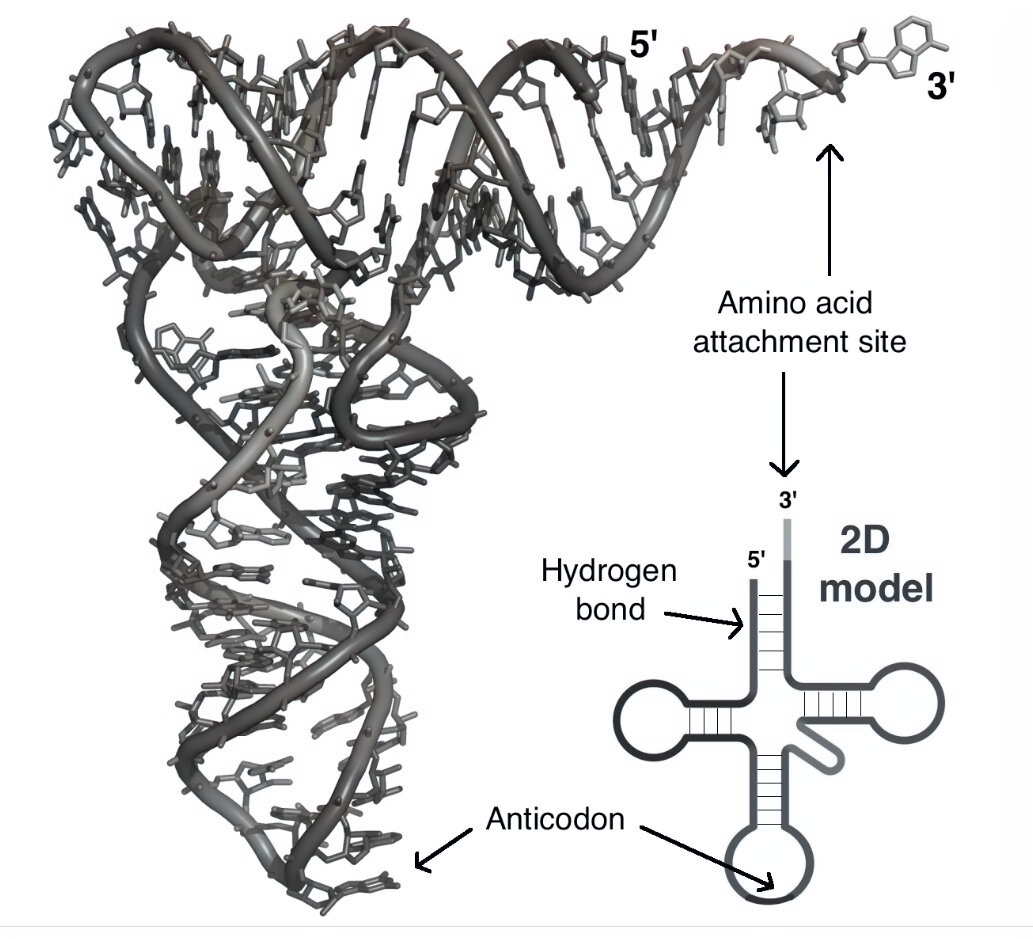1Need help:. draw valine-aminoacyl tRNA synthetase. Show the tRNAs and the valine amino acid. You can use the one-letter code for valine (V) and do not have to draw the amino acid structure. Label the tRNA and amino acid binding sites on the enzyme. Explain the function of valine-aminoacyl tRNA synthetase and explain why there are 20 related enzymes in every cell.
A transfer RNA (tRNA) is a unique type of RNA molecule with the essential function of facilitating the pairing between an mRNA codon and the corresponding amino acid it encodes. It serves as a molecular intermediary or "connector" between these two crucial components of protein synthesis.
Within each tRNA molecule, there exists a set of three nucleotides referred to as an anticodon. This anticodon sequence is highly specific, capable of binding to one or a limited number of distinct mRNA codons. In addition to its anticodon, the tRNA molecule carries a particular amino acid, specifically the one specified by the codons to which that particular tRNA can bind. This dual role of tRNA in codon recognition and amino acid transport is pivotal in ensuring the accurate and orderly assembly of proteins during translation.

The 3D structure of a tRNA
A transfer RNA (tRNA), similar to the example depicted below, originates from a single RNA strand, akin to messenger RNA (mRNA). Nevertheless, this single strand adopts a sophisticated three-dimensional configuration through the establishment of base pairs between nucleotides in various segments of the molecule. These base pair interactions give rise to both double-stranded regions and loops, ultimately shaping the tRNA into an "L" or cloverleaf-like structure.
The "L" or cloverleaf-shaped tRNA molecule possesses distinct regions; at one end lies the anticodon, responsible for recognizing mRNA codons, while at the opposite end, there exists the site for amino acid attachment. Variations in the structural features of various tRNAs are significant, as they contribute to the precise pairing of tRNAs with their corresponding amino acids, ensuring accurate aminoacylation.
Step by step
Solved in 4 steps with 3 images









